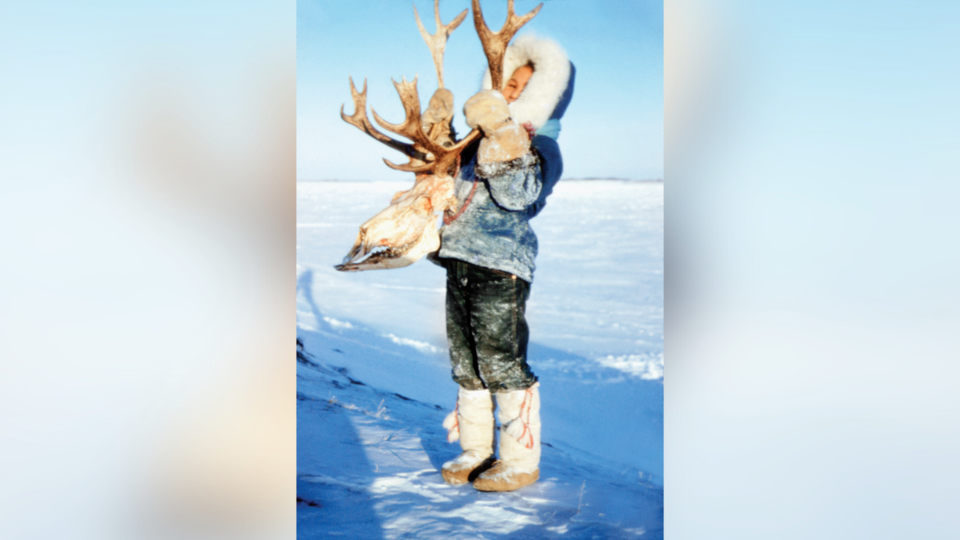A trap line manager's journeys in Northern Ontario 70 years ago are giving people a glimpse of Indigenous history in full colour.
The photos of John Macfie, who worked across Northern Ontario in the 1950s and 1960s, are being displayed at the McMichael Canadian Art Collection in Kleinburg. Curator and author Paul Seesequasis hopes the show will give people a glimpse into the life and culture in Northern Ontario more than seven decades ago.
“It’s pre-snowmobile, the fur trade is still alive, it’s still a sustainable occupation, families are still — particularly the further north you go — living in relationship to the land,” said Seesequasis. “And John Mcfie was along for this whole ride in the area.”
Seesequasis, a nîpisîhkopâwiyiniw (Willow Cree) writer, journalist, and advocate, curates the Indigenous Archive Photo project online. While writing the book Blanket Toss Under Midnight Sun, he was struck by Macfie’s work.

The Indigenous Archive Photo project collects images of Indigenous life from the 1930s to the 1970s and names the faces in many of those photographs.
“It’s the stories that emerged from those photographs,” he said. “While I was doing this, I came across some photos from Northern Ontario that really captivated me by a photographer named John Macfie.”
He reached out to Macfie about his photographs.
“As I looked deeper, I found out John Macfie was still alive. He was in his 90s, and he was actually on Facebook, so I sent a message,” he said. “He was very open, so we got into a long conversation, and out of those conversations, a chapter of Blanket Toss Under Midnight Sun emerged.”
The colour photos, in particular, struck him.
“You get a real sense of the vibrancy of life at the time,” he said. “How people dressed, the elements of fashion you don’t expect up north that people would adopt, the colours pop more. It makes it more contemporary.”

Macfie was not Indigenous and had Scottish roots, but his travels and connections to the communities he worked in allowed him to capture day-to-day moments in communities from Sioux Lookout to Gogama because he knew the people he was photographing, said Seesequasis.
RELATED: Decades-old footage offers glimpse into the past on the James Bay Coast
“There’s a unique connection there because of the history of the fur trade and the Hudson Bay Company. The Scottish did all the work,” he said. “The music, the fiddle, the jigs and reels, and you see that in the photography.”
Macfie had notebooks full of translations in Cree and Ojibway so that he could understand and be understood by the people he was working with.
Macfie travelled across the region with two cameras, one for black-and-white photos and one for colour, in a time when travel in the north was not easy.
“It’d be hard to do it now,” he said. “A lot of the travel in the winter was by dog team until the early '60s, and even when snowmobiles got up there, when a snowmobile breaks down, you’re stuck, so dog teams at least will get you somewhere, and then sometimes by canoe, and he had his cameras with him for all those journeys.”

When he retired to Parry Sound in 1960, he became a columnist for the Georgian Bay Beacon and the Parry Sound North Star and decided what would happen to all those photos.
“At some point, he decided to donate these images, these photo negatives, to the archives of Ontario who fortunately accepted it,” he said. “And the whole thing came full circle.”
The photos are a glimpse at people and places at a time of change, said Seesequasis, but they’re also an important look at the region's history.
“His photography is a reminder that it’s not empty land or new-found land,” said Seesequasis. “There’s always been people there.”
People of the Watershed: Photographs by John Macfie is on display until Nov. 24 at the McMichael Canadian Art Collection in Kleinburg, approximately 35 minutes north of Toronto.





